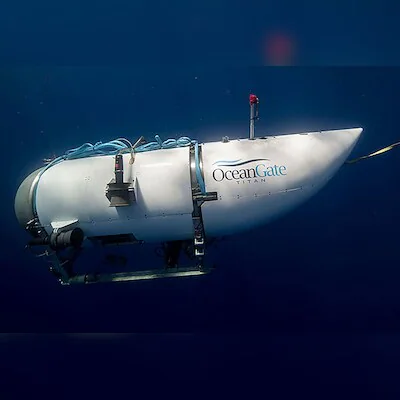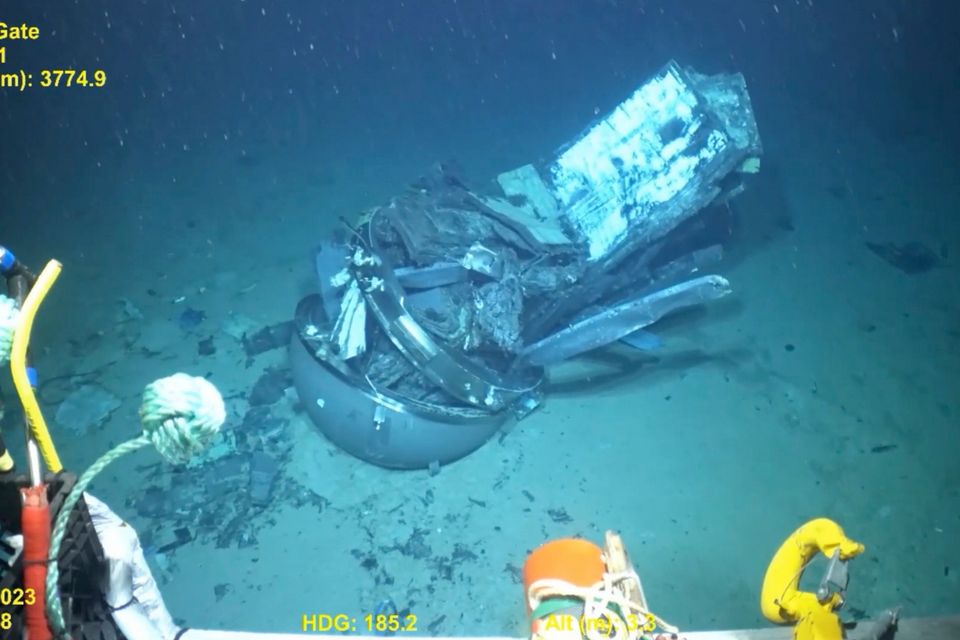A Tragic Descent to History: The Fatal Voyage of OceanGate's Titan

In the scorching June of 2023, as the world went about its daily routines, a tragedy was about to unfold in the depths of the North Atlantic. A deep-sea expedition aiming to visit the century-old wreck of the Titanic turned disastrous, capturing global attention. At the center of this catastrophe was the Titan, a submersible operated by OceanGate, a company dedicated to exploring uncharted oceanic depths. This mission, featuring advanced technology and a brave crew, was meant to be a thrilling voyage into the mysteries of the deep sea.
The Titan Submersible and Its Mission
The Titan was no ordinary vessel. It was a cutting-edge submersible designed to carry up to five people 12,000 feet below the ocean’s surface, to the final resting place of the Titanic, which famously sank in 1912, claiming 1,500 lives. The allure of witnessing the Titanic’s wreckage firsthand brought together a group of experts and adventurers, all bound by a common fascination with the ocean’s mysteries.
The Crew
Onboard the Titan were five individuals:
- Stockton Rush, CEO of OceanGate and the pilot of the Titan.
- Hamish Harding, a British billionaire known for his high-risk explorations.
- Shahzada Dawood, a Pakistani businessman, accompanied by his 19-year-old son, Suleman.
- Paul-Henri Nargeolet, a French Titanic expert.
Each brought unique backgrounds and a shared sense of adventure as they embarked on this unprecedented journey.
The Fateful Dive
On June 18, 2023, the Titan began its descent into the cold waters of the North Atlantic, staying in communication with its support ship, the Polar Prince. For about an hour and forty-five minutes, all seemed well as the submersible sent regular signals back. However, at 10:47:33 EDT, communication was suddenly lost. Despite attempts to re-establish contact, all efforts failed, and the realization set in that something had gone catastrophically wrong.
The Search and Rescue Mission
What followed was an intense, multinational search effort involving the crew of the Polar Prince, the U.S. Coast Guard, Canadian authorities, and private organizations. The Titan had limited oxygen supplies, estimated to last only 96 hours, which added urgency to the search. For days, sonar equipment, aircraft, and underwater drones scoured the vast, dark expanse of the Atlantic, hoping to locate the small submersible. Yet, each hour that passed diminished hopes of a rescue.

The Heartbreaking Discovery
On June 22, 2023, after days of searching, debris from the Titan was found near the wreck of the Titanic, about 1,600 feet away from the historic ship’s resting place. Authorities confirmed that the Titan had suffered a catastrophic implosion, killing all five passengers instantly. In the extreme depths of the ocean, where pressure reaches crushing levels, the implosion would have occurred in an instant, so swiftly that the occupants would have been unaware of the event.
Questions and Investigations
As the world processed the tragedy, questions arose about how this could happen. The Titan was touted as a marvel of modern engineering, yet safety concerns had been raised about its ability to withstand the ocean’s extreme conditions. Stockton Rush, OceanGate’s CEO and the Titan’s pilot, had even received warnings from experts in the field regarding the vessel’s durability.
A Legacy of Human Ambition
This tragedy highlighted the human fascination with the unknown. The Titanic, a symbol of ambition and loss, has long drawn people to its story, and now the Titan has become part of that narrative. While advanced technology was involved, the forces of the ocean proved unforgiving, reminding us of the inherent risks of exploring such extreme environments.
Similar Post You May Like
-

CFCs, HFCs and their long, troubled history
At its peak, the ozone hole covered an area 7 times larger than the size of Europe, around 29.9 million km2, and was rapidly expanding
-

The Origin of Universe: Deciding point where it all began!
Let us unravel and surf through the ideas throughout ages to understand what the universe and its origin itself was to its inhabitants across history.
-

The Artemis Program
Inspired by the Greek goddess of the Moon, twin sister to Apollo, the artimis program was named on 14 May 2019 by Jim Bridenstine.






